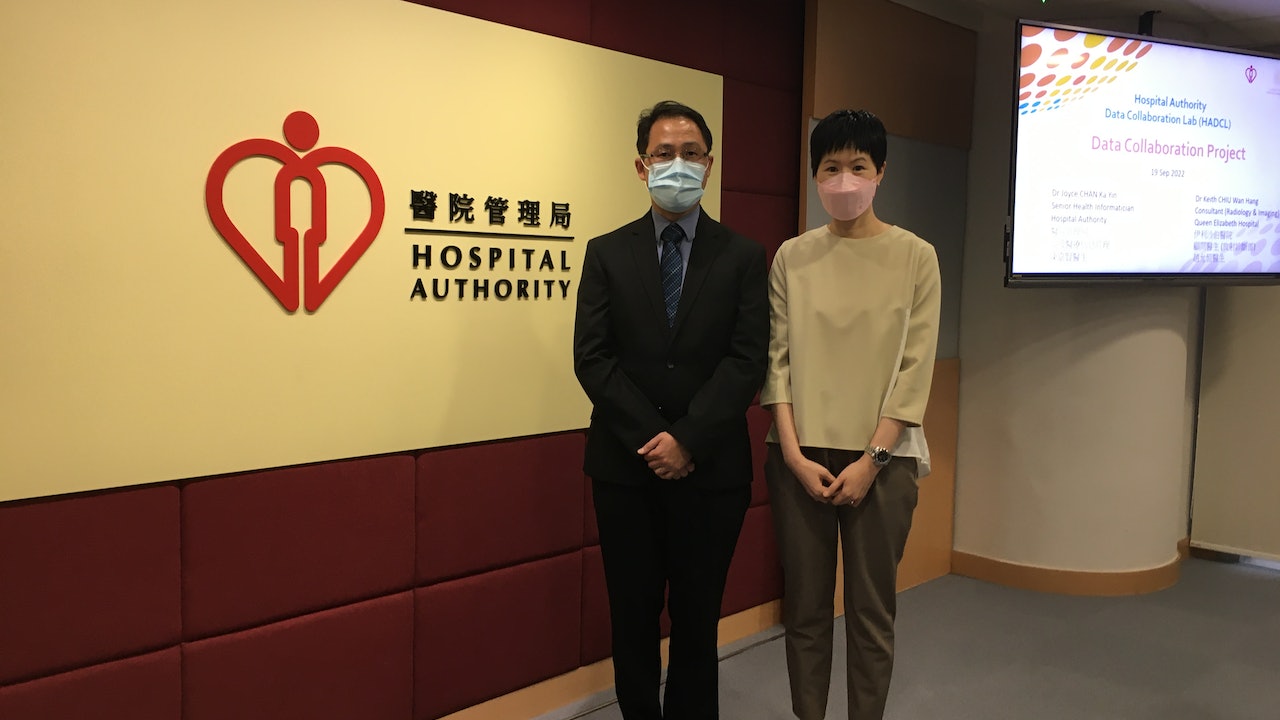In order to facilitate biotechnology research and medical data analysis by researchers from the eight universities, the HA established a data laboratory in 2019 and provided three data research platforms.
The laboratory database contains 5 billion items of data collected by the HA over the past 25 years, including patient clinical diagnosis, laboratory reports, X-ray images and other information.
The platform has so far assisted researchers in 42 research projects, 16 of which have been completed.
Zhao Yunheng, a consultant doctor of the Radiological Diagnosis Department of Queen Elizabeth Hospital, and his team used the data laboratory platform to develop an artificial intelligence system to identify hip fractures within one year, and use the artificial intelligence system to identify whether patients have fractures in X-rays, with an accuracy of 96% , the system will be trialled in the New Territories West and Hong Kong Island West Cluster Accident and Emergency Departments this winter.
Artificial intelligence system for identifying hip fractures.
(Provided by Hospital Authority)
In the past, researchers needed to collect medical data for research. They needed to go to hospitals and colleges to find data one by one, or it took several months to collect. Therefore, the HA established a data laboratory to collect a large amount of data.
The laboratory provides three data research platforms, including data exploration workshops, self-service data platforms and data collaboration projects.
The self-service data platform also includes remote services. Researchers do not need to go to the laboratory in person, but can obtain data through campus facilities and encrypted platforms.
At present, the University of Hong Kong, CUHK and HKUST have used remote services and signed a security agreement to prevent data leakage.
Chen Jiaxian, senior medical information manager of the Hospital Authority, stressed that all data has been de-identified, and the digital footprints of researchers will also be recorded to ensure the security of the data.
The data lab has been in operation for three years so far, and it is expected that hundreds of thousands of items of data will be added every year. The current data is updated to 2020.
In addition, the number of research projects involved through the data research platform has continued to rise. So far, 42 projects have been launched, of which 16 projects have been completed, involving 400 researchers.
Zhao Yunheng's team successfully developed a 24-hour artificial intelligence system for identifying hip fractures through the platform within one year, assisting doctors to identify pelvis, femoral neck and other parts on X-rays, and analyze whether there are surgical implants in patients, so as to analyze patient fractures or not.
Zhao Yunheng (left) said that the research used 1 million X-rays and the data of 180,000 patients to develop an artificial intelligence system, and then used 6,000 non-database X-rays to compare the system, and found that the accuracy of the system reached 96%.
On the right is Chen Jiaxian.
(Photo by Huang Xuzhi)
Zhao Yunheng said that the research used 1 million X-rays and the data of 180,000 patients to develop an artificial intelligence system, and then used 6,000 non-database X-rays to compare the system, and found that the accuracy of the system reached 96%.
He pointed out that if an elderly person falls into the hospital for treatment, the doctor will first ask for a medical examination. After the patient takes an X-ray, the system will calculate the X-ray image, and the system will show which part of the patient has a problem.
After that, the doctor will compare the clinical symptoms of the patient with the results of the system with X-ray films, and then arrange the patient to receive follow-up treatment.
Chen Jiaxian emphasized that there are many reasons for patients to fall, and described that "AI is to look at X-rays with multiple pairs of eyes." As an auxiliary form, doctors mainly determine the cause.
The artificial intelligence system for identifying hip fractures will be trialled in the New Territories West and Hong Kong Island West Cluster Accident and Emergency Departments during the peak influenza season this winter. If the trial is successful, it will be widely used in other A&E departments.
She said that because the peak of influenza in winter is a period of high incidence of osteoporosis among the elderly, and the elderly wear more clothes, which leads to a decrease in perception ability and is prone to falls and fractures, she hopes to speed up the diagnosis of fractures in patients in public hospitals, divert patients for surgery and Rehabilitation treatment.
Osteoporosis|Patients Beware of Falls and Fractures Opportunities for Life Maintenance 4 Countermeasures
Osteoporosis|A middle-aged woman feels stomach pain and knows that she has a fracture after examination. It turns out that her bones also have "three highs".







/cloudfront-eu-central-1.images.arcpublishing.com/prisa/LFO6NYKDYNGQJMNQRNDG6YRK7Q.jpg)






